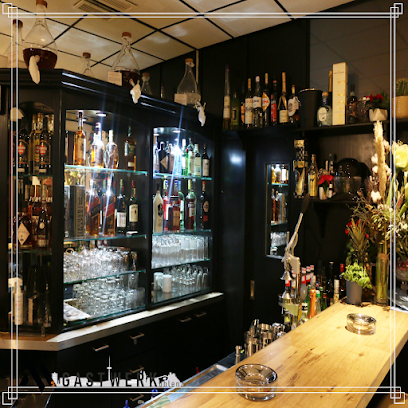
Fort Asterstein: A Prussian Fortress with a Past
Explore Fort Asterstein in Koblenz: A historic Prussian fortress undergoing revitalization, offering guided tours, events, and a glimpse into the region's military past within a UNESCO World Heritage Site.
Fort Asterstein, a 19th-century Prussian fortress in Koblenz, offers a glimpse into the region's military history. Constructed between 1819 and 1828 as part of the larger Koblenz and Ehrenbreitstein fortification system, it served to protect the city and the Ehrenbreitstein Fortress from southern attacks. Over the years, it has been a barracks, emergency housing, and even left to decay. Today, thanks to local initiatives, Fort Asterstein is being revitalized as a cultural and recreational space. Visitors can explore the grounds, attend events, and learn about the fort's fascinating past. The ongoing renovations, including a planned information center, promise to make it an even more engaging destination. With its historical significance and ongoing restoration, Fort Asterstein provides a unique experience for history buffs and casual tourists alike.
A brief summary to Fort Asterstein
- Kolonnenweg 11, Koblenz, 56077, DE
- Visit website
Local tips
- Check the event calendar for concerts, theater performances, and guided tours, which offer unique ways to experience the fort.
- Wear comfortable shoes, as exploring the fort involves walking on uneven terrain and grassy areas.
- Visit the nearby Obelisk on the Asterstein for panoramic views of Koblenz and the Rhine Valley.
Getting There
-
Public Transport
From Koblenz Hauptbahnhof (main train station), take bus line 8 towards Asterstein, or bus line 7 towards Arenberg. Get off at the 'Asterstein' stop, which is a short walk (approximately 5-10 minutes) to Fort Asterstein. A single bus fare is approximately €2.60. Consider purchasing a Koblenz Card for €9.80, which provides free travel on public transport within the city for 24 hours, as well as discounts on other attractions.
-
Taxi/Ride-Share
A taxi or ride-share from Koblenz Hauptbahnhof to Fort Asterstein will cost approximately €12-€18, depending on traffic and the specific provider. The journey typically takes 10-15 minutes. Be sure to specify 'Fort Asterstein, Kolonnenweg 11' as your destination.
-
Driving
From Koblenz city center, follow signs towards Asterstein. Once in Asterstein, follow Kolonnenweg. Limited free parking is available along Kolonnenweg near the fort. Be aware that parking can be challenging during peak hours or events. Consider alternative parking options in Asterstein if necessary, and be prepared for a short walk to the fort.
Discover more about Fort Asterstein
Iconic landmarks you can’t miss
Fort Asterstein
0.0 km
Explore Fort Asterstein in Koblenz: A historic Prussian fortress undergoing revitalization, offering guided tours, events, and a glimpse into the region's military past within a UNESCO World Heritage Site.
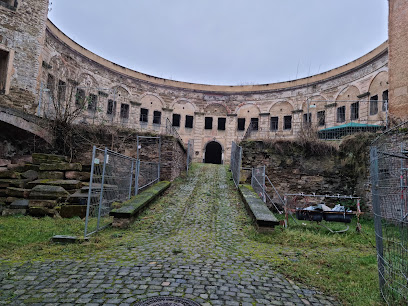
Rheinburg
0.5 km
Experience the rich history and breathtaking views at Rheinburg Castle, a stunning medieval fortress overlooking the Rhine River in Koblenz, Germany.
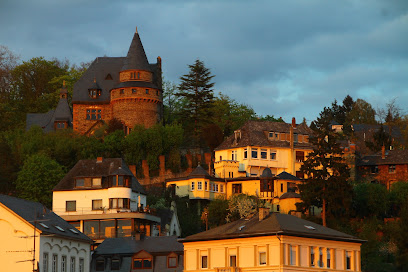
Pegelbrunnen
0.6 km
Discover Koblenz's flood history at the Pegelbrunnen in Ehrenbreitstein, a unique fountain marking centuries of Rhine River water levels on Kapuzinerplatz.
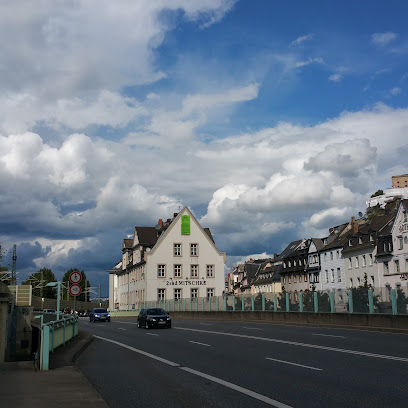
Ehrenbreitsteiner Festungsaufzug
0.8 km
Ascend to Ehrenbreitstein Fortress with ease on the modern incline lift, offering panoramic views and barrier-free access to this historic landmark and UNESCO World Heritage Site.
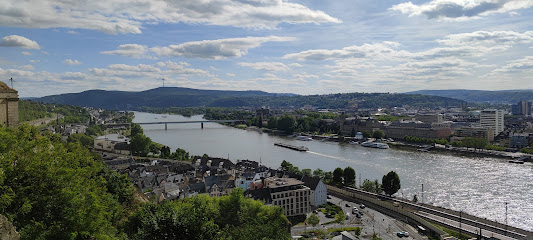
Mahnmal für die Opfer des Nationalsozialismus in Koblenz
1.0 km
A poignant memorial in Koblenz honoring the victims of National Socialism, urging reflection on the past and commitment to a future of tolerance and justice for all.
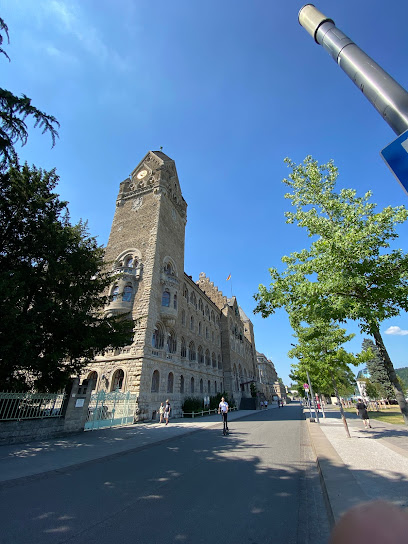
Rhein-Mosel-Halle
1.1 km
Koblenz's premier event venue, the Rhein-Mosel-Halle, offers state-of-the-art facilities for conferences, concerts, and exhibitions in a central location near the Rhine and Mosel rivers.
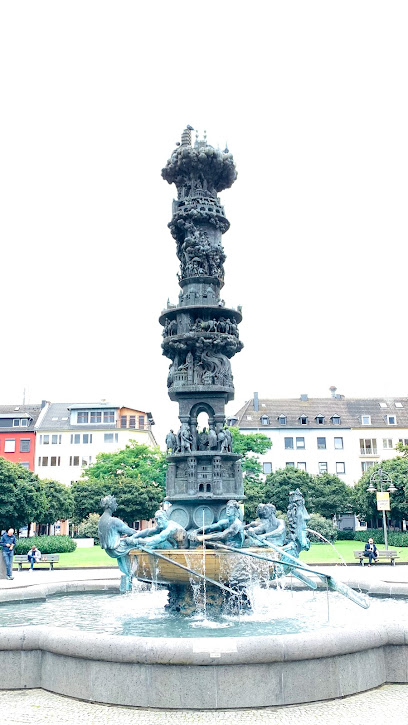
Ehrenmal des deutschen Heeres
1.1 km
A somber memorial within Ehrenbreitstein Fortress, Koblenz, honoring German Army soldiers and offering a space for reflection on war and remembrance.
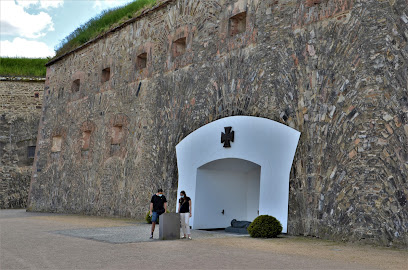
Clemensbrunnen, Koblenz - Clemens Wenzeslaus von Sachsen (1791)
1.2 km
Discover the Clemensbrunnen in Koblenz: a historic fountain honoring Clemens Wenzeslaus, reflecting the city's rich electoral past and architectural beauty.
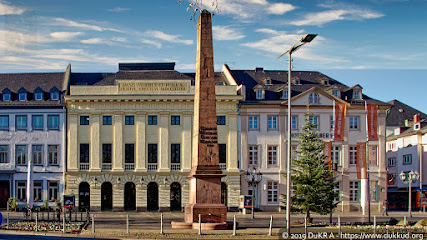
Josef-Görres-Platz
1.2 km
Experience the vibrant heart of Koblenz at Josef-Görres-Platz: a historic square where culture, architecture, and local life intertwine, offering an unforgettable glimpse into the city's soul.
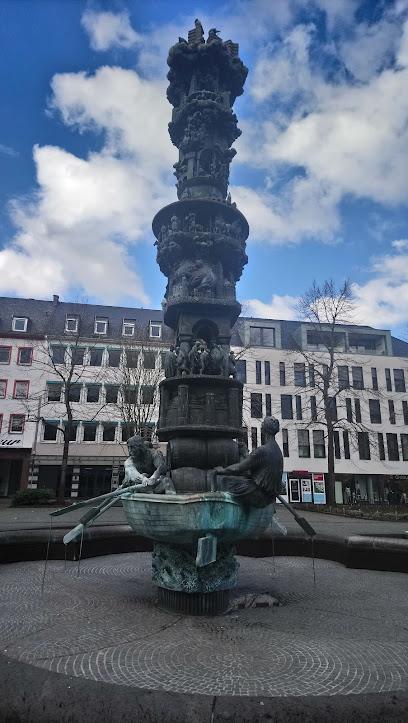
Denkmal der deutschen Einheit
1.3 km
Witness the confluence of history and rivers at the Denkmal der Deutschen Einheit in Koblenz, a powerful symbol of German unity and resilience at the Deutsches Eck.
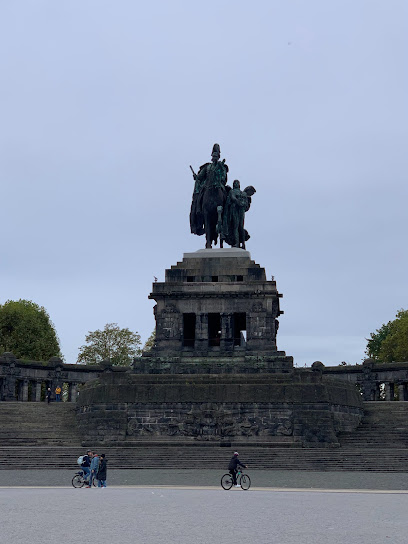
Peter-Altmeier-Denkmal
1.3 km
Honoring Rhineland-Palatinate's long-serving Minister President, this Koblenz monument symbolizes post-war unity and European reconciliation in a scenic riverside setting near Deutsches Eck.
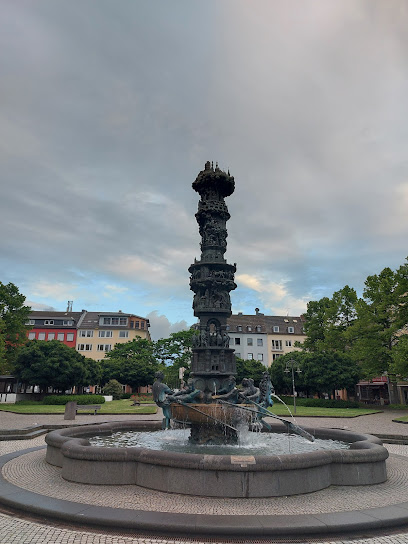
Jesuitenpl.
1.4 km
Discover Jesuitenplatz in Koblenz: A historic square where the echoes of the Jesuit order resonate through stunning architecture and a vibrant cultural atmosphere in the heart of the Old Town.
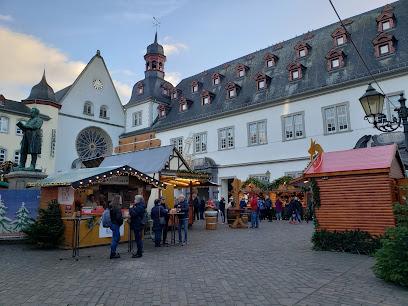
Barmherzige Brüder von Maria-Hilf - Peter Friedhofen Haus
1.5 km
Discover a serene sanctuary in Koblenz's Old Town at the Peter Friedhofen Haus, a historic monastery offering tranquility, reflection, and a glimpse into the Barmherzige Brüder's enduring legacy.
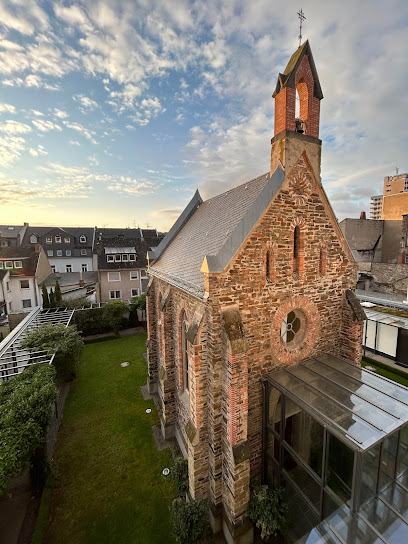
Altes Kaufhaus
1.5 km
Explore the Altes Kaufhaus in Koblenz: a historic landmark blending Gothic and Baroque architecture, complete with the iconic 'Augenroller' clock, on the charming Florinsmarkt.

Denkmal- Engel der Kulturen
1.5 km
Discover the Engel der Kulturen in Koblenz, a stunning monument symbolizing cultural harmony and inviting reflection amidst the scenic beauty of the city's historic Altstadt.
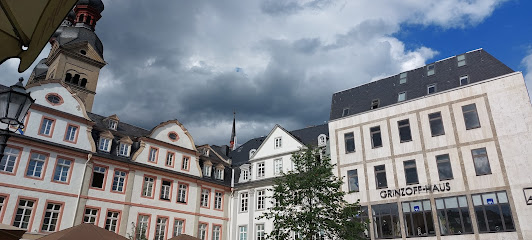
Unmissable attractions to see
Rhein-Museum e. V. Koblenz
0.7 km
Explore the Rhine's rich maritime heritage at the Rhein-Museum in Koblenz, an engaging destination for history lovers and families.
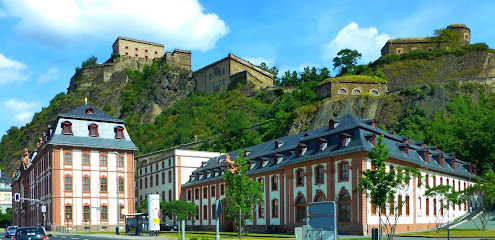
Denkmal für das Infanterie-Regiment „von Goeben“ Nr. 28
0.8 km
Explore the Monument to the Infantry Regiment von Goeben No. 28 in Koblenz, a tribute to military history surrounded by serene landscapes.
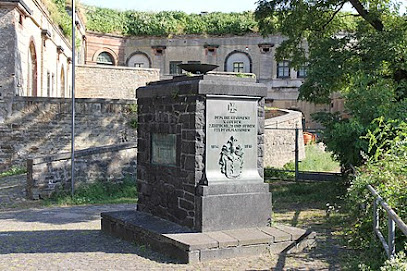
Joseph-Görres-Denkmal
0.8 km
Explore the Joseph-Görres-Denkmal in Koblenz: A stunning monument celebrating history, culture, and the beauty of the Kaiserin-Augusta-Anlagen.
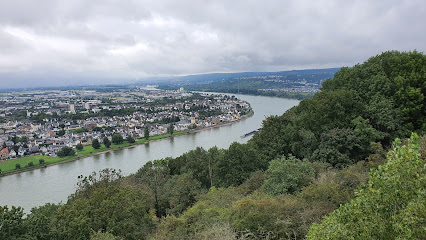
Pegelhaus
0.9 km
Experience authentic German cuisine with stunning river views at Pegelhaus, a must-visit restaurant in Koblenz that delights every palate.
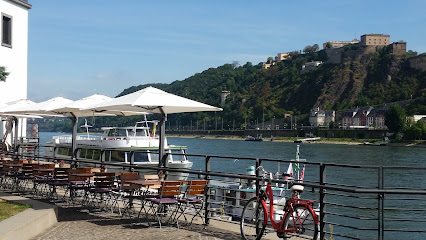
Preußisches Regierungsgebäude
0.9 km
Discover the architectural beauty and historical significance of the Preußisches Regierungsgebäude in Koblenz, a must-visit tourist attraction.
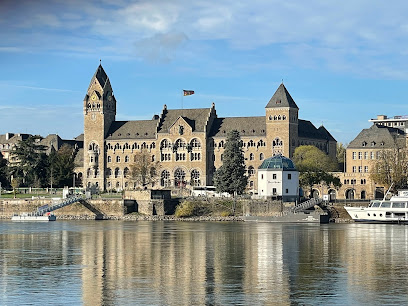
Anleger 5 KDTicket Office Koblenz
0.9 km
Explore the enchanting Rhine River from Koblenz with scenic boat tours that unveil the beauty and history of this UNESCO World Heritage site.
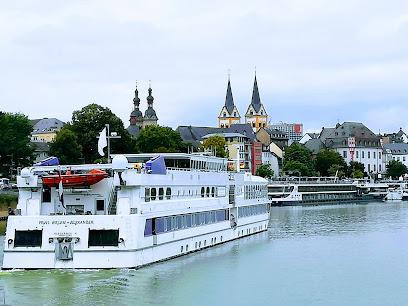
Schloss Koblenz
0.9 km
Discover the beauty and history of Schloss Koblenz, a stunning Baroque castle offering breathtaking views and rich cultural experiences in Germany.
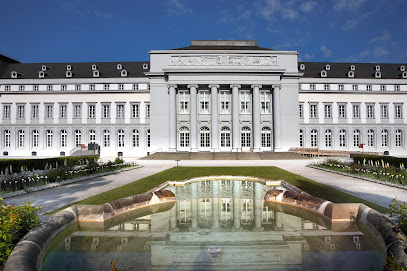
Konrad-Adenauer-Ufer
0.9 km
Discover the beauty and tranquility of Konrad-Adenauer-Ufer, a stunning riverside promenade in Koblenz, perfect for relaxation and outdoor activities.
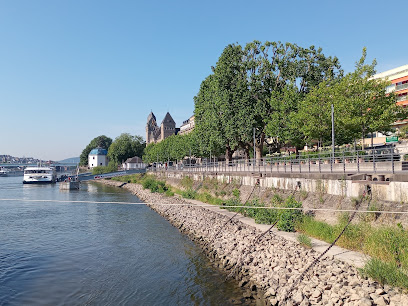
Ehrenbreitstein Fortress
1.0 km
Discover the historical marvel of Ehrenbreitstein Fortress, where breathtaking views and rich culture come together in Koblenz, Germany.
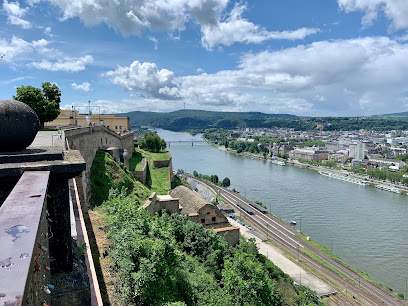
Anleger 3 - Hölzenbein
1.0 km
Discover the scenic beauty of the Rhine River at Anleger 3 - Hölzenbein, a perfect spot for relaxation and local culture in Koblenz.
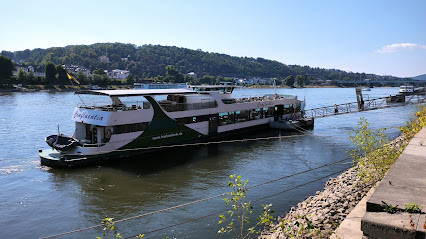
Landesmuseum Koblenz
1.1 km
Discover the rich history of the Rheinland-Palatinate region at Landesmuseum Koblenz, located in the stunning Ehrenbreitstein Fortress.
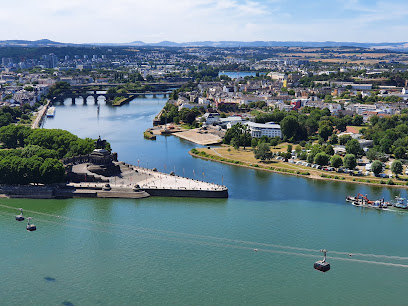
Seilbahn Koblenz - Talstation
1.1 km
Discover breathtaking views and rich history at Seilbahn Koblenz, the iconic mountain cable car offering stunning aerial perspectives of the city.
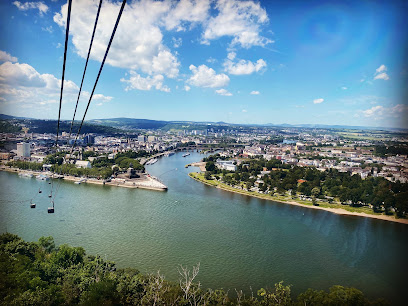
Basilica of St. Castor
1.1 km
Explore the Basilica of St. Castor in Koblenz, a historic Romanesque church offering breathtaking architecture and a serene atmosphere for pilgrims and tourists alike.

Ludwig Museum Koblenz
1.1 km
Discover the vibrant world of modern art at Ludwig Museum Koblenz, where creativity meets culture in a stunning setting.

Deinhardplatz
1.2 km
Explore Deinhardplatz in Koblenz, where history meets vibrant culture and stunning river views await every visitor.
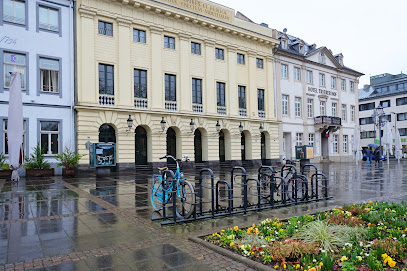
Essential places to dine
DIEHLs Restaurant Koblenz
0.5 km
Experience culinary excellence at DIEHLs Restaurant in Koblenz—where local flavors meet stunning riverside views.

Maharani Restaurant
0.6 km
Experience authentic Indian cuisine at Maharani Restaurant in Koblenz – where rich flavors and warm hospitality await every visitor.
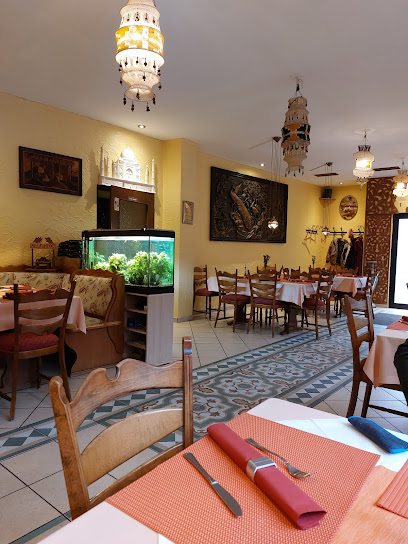
Weindorf Koblenz
1.0 km
Discover authentic German flavors at Weindorf Koblenz - where every meal is a celebration of tradition and taste.
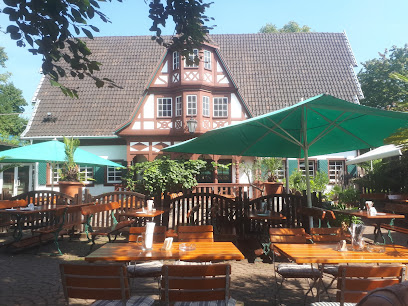
Wacht am Rhein
1.0 km
Experience authentic Italian flavors at Wacht am Rhein, where exquisite pizza meets stunning views of the Rhine River.
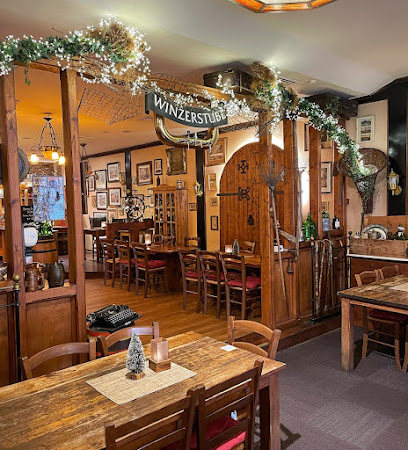
An Nam Asia Fusion & Sushi
1.0 km
Discover the rich flavors of Vietnam at An Nam Asia Fusion & Sushi in Koblenz - where tradition meets modern culinary creativity.
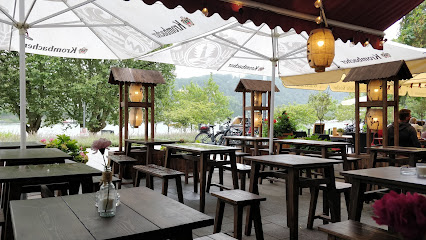
La Gondola - Koblenz
1.0 km
Savor authentic Italian cuisine at La Gondola in Koblenz – where every meal is a celebration of flavor and tradition.
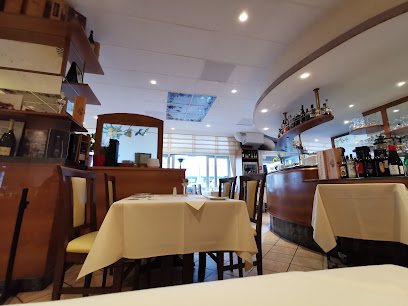
Restaurant Casino
1.1 km
Experience authentic German cuisine with stunning views at Restaurant Casino in Festung Ehrenbreitstein, Koblenz.
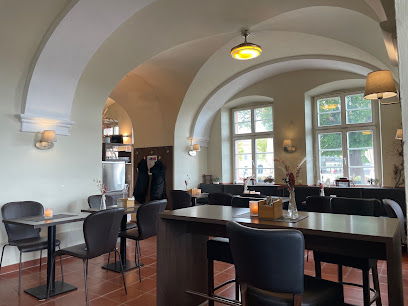
Gerhards Genussgesellschaft - Koblenz
1.2 km
Experience gourmet dining at Gerhards Genussgesellschaft in Koblenz—where tradition meets innovation in every bite.

Buffalo Das Steakhaus
1.2 km
Savor exceptional steaks and delightful dishes at Buffalo Das Steakhaus in Koblenz - a must-visit destination for meat lovers.
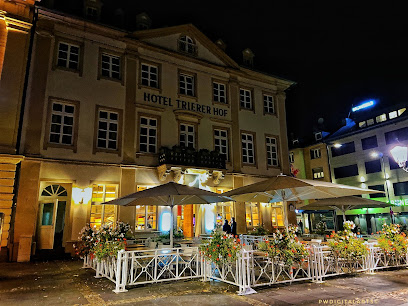
adaccio
1.2 km
Savor authentic Italian flavors at Adaccio in Koblenz—where delicious food meets vibrant ambiance.
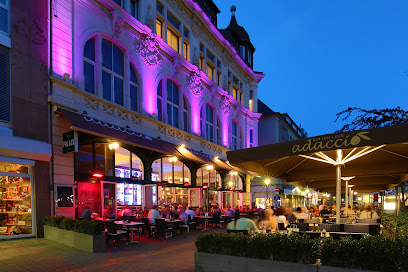
Saphir Koblenz
1.2 km
Experience exquisite dining at Saphir Koblenz - where local flavors meet international cuisine in a charming setting.

Genusswerkstatt
1.3 km
Experience authentic Mediterranean cuisine at Genusswerkstatt in Koblenz - where flavor meets tradition in a warm and inviting atmosphere.

Einstein Koblenz
1.3 km
Discover the vibrant flavors of Einstein Koblenz – your go-to restaurant and cocktail bar for unforgettable dining experiences.
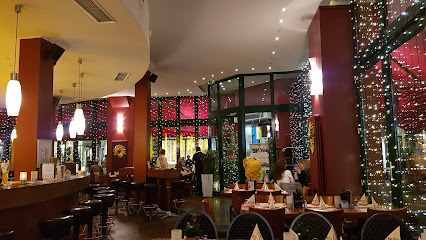
Cowboys Burger Saloon
1.3 km
Experience authentic American flavors at Cowboys Burger Saloon in Koblenz - home to mouthwatering burgers and an inviting atmosphere.

ALEX Koblenz
1.3 km
Experience the best of German cuisine and delightful pastries at ALEX Koblenz - where every meal is a celebration.
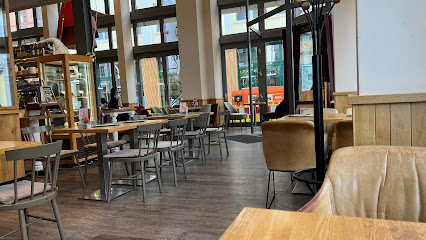
Markets, malls and hidden boutiques
KSSpielwaren
0.3 km
Explore KSSpielwaren in Koblenz, an enchanting toy store filled with a diverse selection of toys and collectibles for all ages.

Rendantur Koblenz
0.5 km
Explore the local charm of Rendantur Koblenz, a delightful store offering unique products that celebrate the rich culture and traditions of the region.
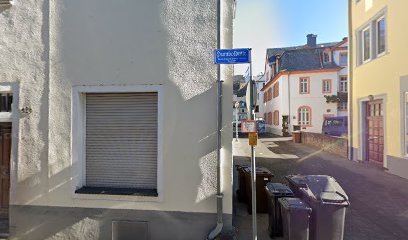
JJ7
0.6 km
Experience the local flavor at JJ7 Kiosk in Koblenz, your go-to spot for snacks and refreshments amidst stunning scenery.

goSteam - Der Dampfer Shop - E-Zigaretten Fachgeschäft in Koblenz
0.6 km
Visit goSteam in Koblenz for a vast selection of vaporizers and e-cigarettes, expert advice, and a welcoming atmosphere for all vaping enthusiasts.

Bottega d'Amore - von Herzen
0.7 km
Discover Bottega d'Amore in Koblenz, where culinary delights meet artistic inspiration in a cozy café and boutique atmosphere.

Eilika Ameln Antiquitäten, Restaurierungen
0.8 km
Explore a captivating collection of antiques at Eilika Ameln Antiquitäten, a must-visit for history enthusiasts in Koblenz.

Bathroom
1.3 km
Discover unique souvenirs and local crafts at Koblenz's charming gift shop, capturing the spirit of the region in every piece.

KIOSK
1.3 km
Discover KIOSK at the Seilbahn Koblenz - your essential stop for snacks, drinks, and local souvenirs with stunning river views.
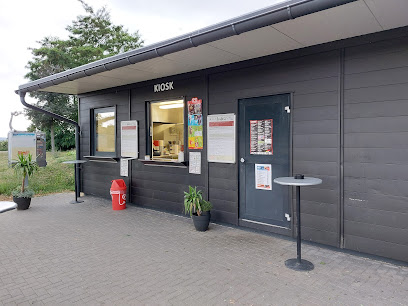
G-Star
1.4 km
Explore G-Star in Koblenz, a premier destination for trendy denim and stylish fashion accessories that cater to all tastes.
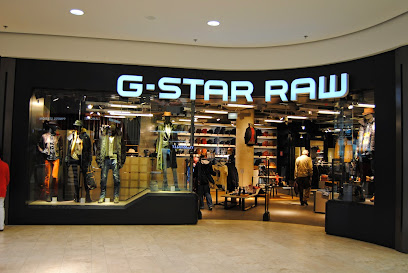
Wolford Partner Boutique Koblenz
1.4 km
Discover luxury women's fashion at Wolford Partner Boutique Koblenz, where quality meets elegance in every piece.
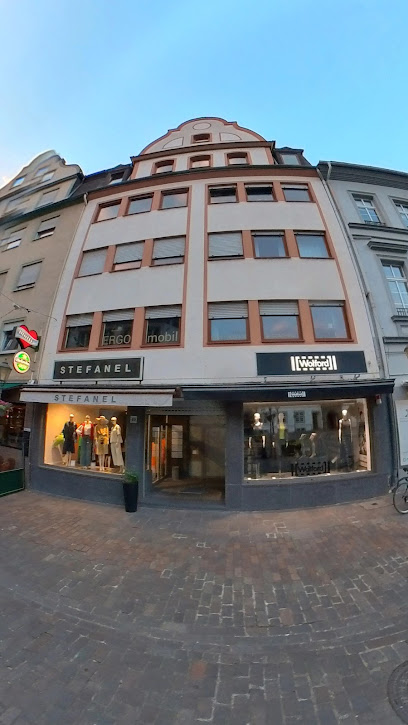
Boutiquen Isolde GmbH
1.4 km
Discover modern elegance and unique styles at Boutiquen Isolde GmbH, a charming women's clothing boutique in Koblenz, Germany.

Unicorn Koblenz
1.4 km
Explore the mystical world of Unicorn Koblenz, your go-to metaphysical supply store in the heart of Koblenz, perfect for every spiritual seeker.
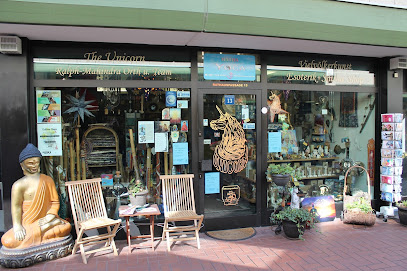
Forum Mittelrhein Koblenz
1.4 km
Explore the vibrant Forum Mittelrhein Koblenz, your ultimate shopping destination with diverse stores, dining, and entertainment in the heart of the city.
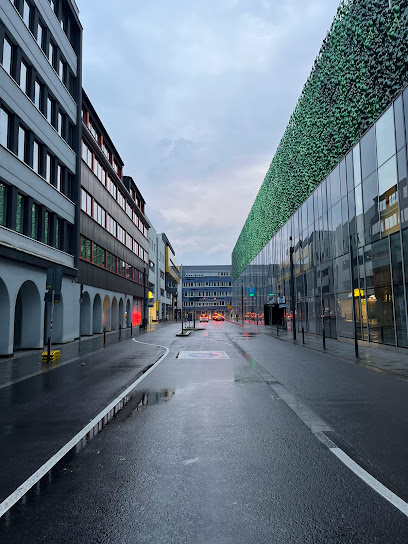
Oxfam Shop Koblenz
1.4 km
Explore Oxfam Shop Koblenz for unique pre-loved treasures, from vintage clothing to home goods, all while supporting a charitable cause.
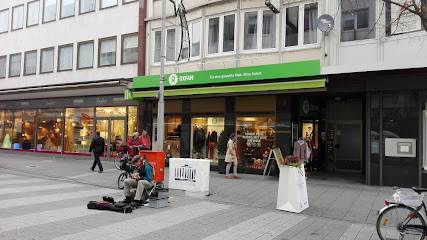
NEW YORKER
1.4 km
Explore NEW YORKER in Koblenz for the latest fashion trends and a diverse selection of clothing and accessories for all ages.

Essential bars & hidden hideouts
Cuvée DIEHLs Lounge
0.5 km
Experience the perfect blend of relaxation and scenic views at Cuvée DIEHLs Lounge in Koblenz, where local flavors meet stunning river landscapes.
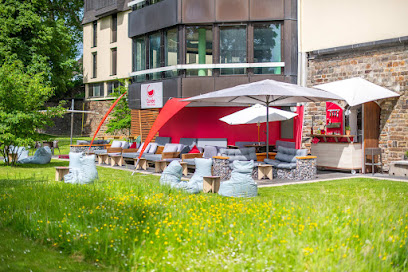
Wein- und Kaffeestübchen
0.5 km
Discover the cozy charm of Wein- und Kaffeestübchen in Koblenz, where exquisite wines and aromatic coffees await to enhance your travel experience.
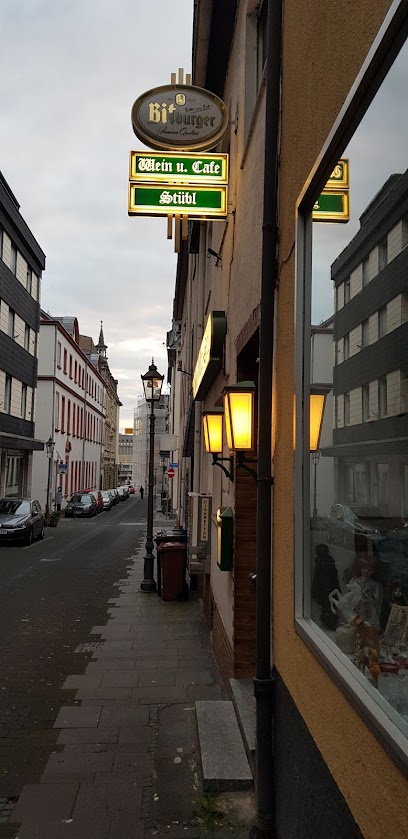
Wild Life Pub
0.6 km
Experience the lively Wild Life Pub in Koblenz – a welcoming bar perfect for drinks, snacks, and live entertainment in a vibrant setting.
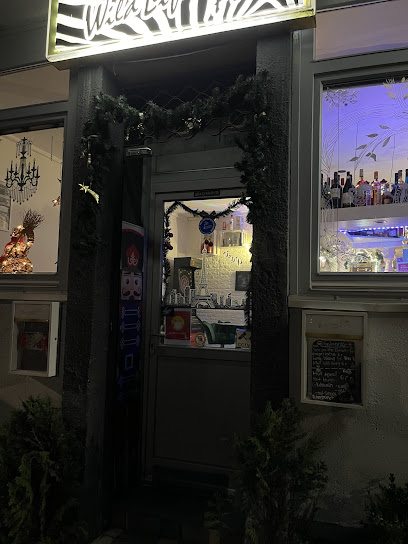
Winninger Weinstuben
1.1 km
Experience the rich flavors of local wines at Winninger Weinstuben in Koblenz, a charming wine bar perfect for every wine lover.
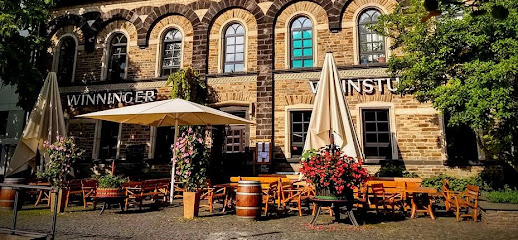
Biergarten Festung Ehrenbreitstein
1.1 km
Visit Biergarten Festung Ehrenbreitstein for a unique dining experience with stunning views and authentic German cuisine in Koblenz.
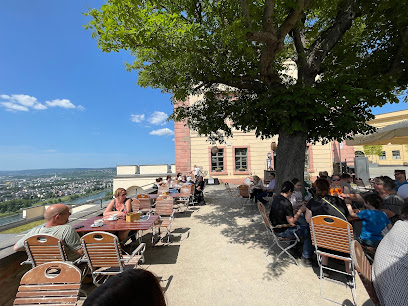
Public Lounge Bar - Koblenz
1.1 km
Discover the lively Public Lounge Bar in Koblenz, where cocktails meet community in a vibrant atmosphere perfect for unwinding after a day of exploration.

McCoy - The Highball Ltd.
1.2 km
Discover McCoy - The Highball Ltd., Koblenz's premier cocktail bar, where innovative drinks and a vibrant atmosphere create unforgettable experiences.
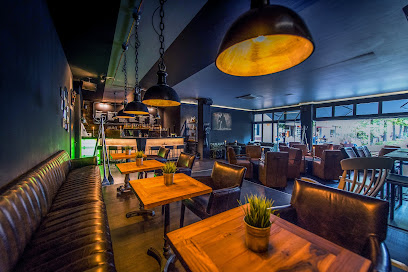
Königsbacher Biergarten am Deutschen Eck GmbH
1.3 km
Experience the best of German beer culture at Königsbacher Biergarten, where tradition meets relaxation in beautiful Koblenz.
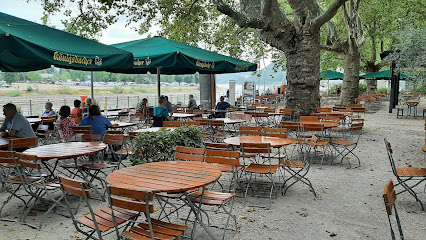
Daddy-O's - Koblenz
1.3 km
Discover Koblenz's top cocktail bar, Daddy-O's, where expertly crafted drinks meet a vibrant atmosphere for an unforgettable night.

Mephisto - Koblenz
1.3 km
Discover the energetic vibe of Mephisto in Koblenz, a premier pub offering delicious food, refreshing drinks, and an unforgettable local experience.

Zum Schiffchen
1.5 km
Discover the heart of Koblenz at Zum Schiffchen, where traditional German cuisine meets a lively pub atmosphere.

Atlas Bar - Koblenz
1.5 km
Discover the vibrant atmosphere of Atlas Bar in Koblenz, where relaxation meets socializing in a charming setting.
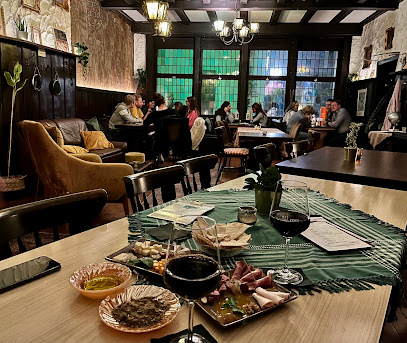
Café Bar My Way
1.5 km
Discover the perfect blend of relaxation and excitement at Café Bar My Way, Koblenz's favorite spot for coffee, cocktails, and light bites.
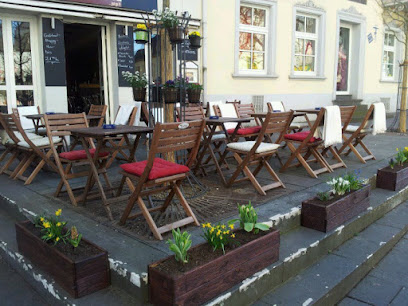
Piper's Corner Celtic Irish Pub - Koblenz
1.5 km
Experience the warmth of Ireland at Piper's Corner Celtic Irish Pub in Koblenz, where great food, drinks, and live music await.
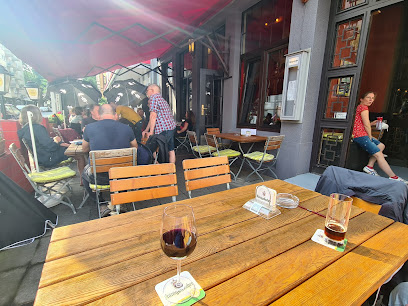
M's GASTWERKoblenz
1.5 km
Discover M's GASTWERKoblenz, a charming lounge offering exquisite cocktails and wines in a cozy atmosphere, perfect for unwinding after a day of exploration.
